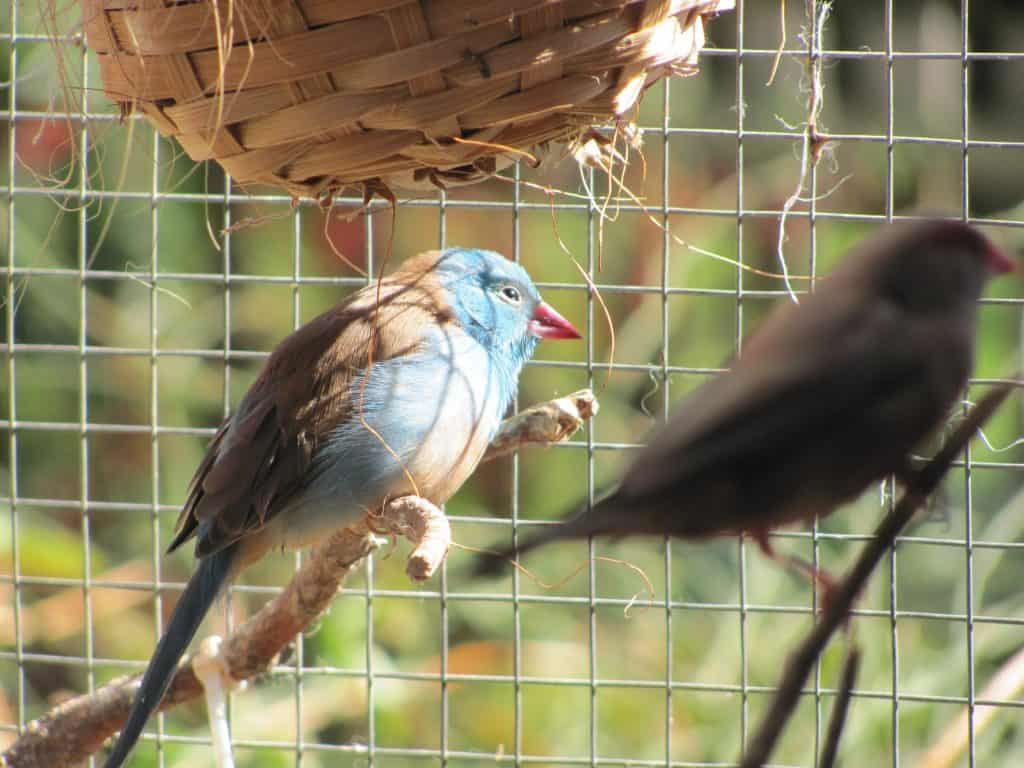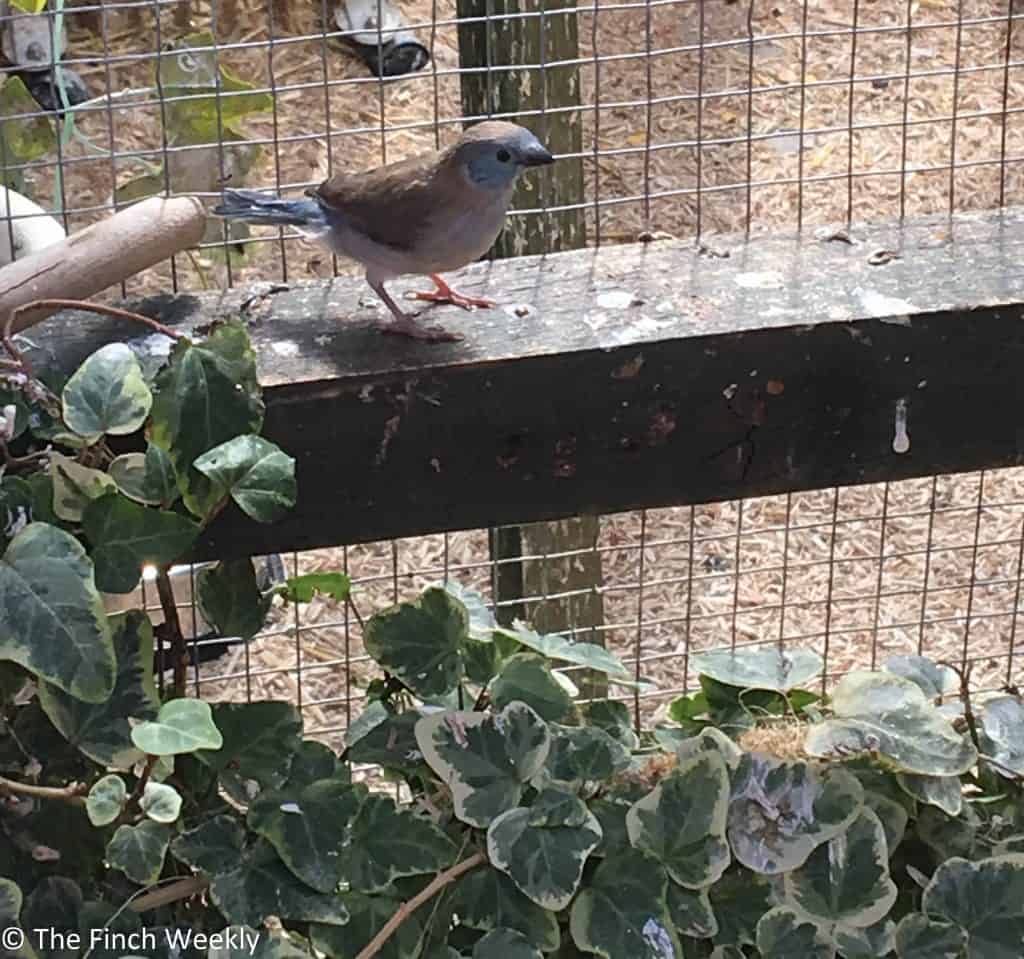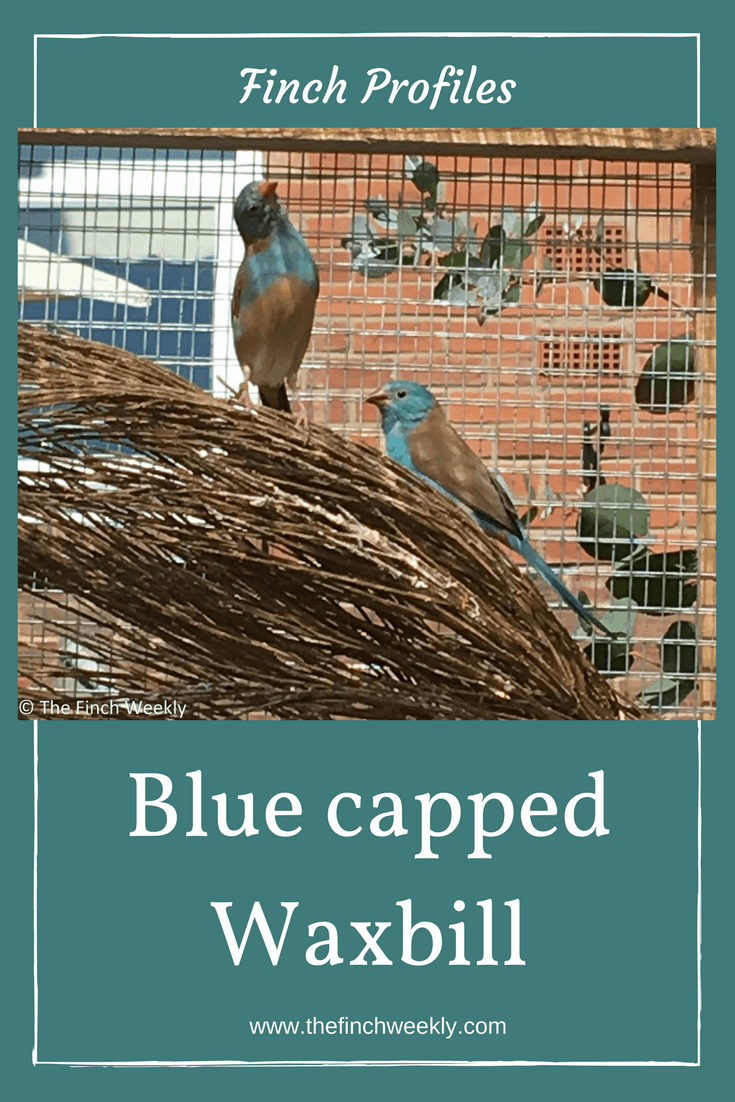The blue capped waxbill is a distinctive little finch of the Estrildidae family that gets its name from its beautiful breast colour – a vibrant, electric blue. It originates from Central and East Africa and has adapted to living in captivity, though can still be tricky to breed.
Natural environment
The Blue capped Waxbill or Cordon Bleu, or Uraeginthus cyanocephalus, is a native of Ethiopia, Kenya, Somalia, South Sudan and Tanzania where it typically lives in savannah areas, scrub country or dry woodland areas as well as cultivated areas with plenty of bushes and shrubs such as gardens or near roadsides. To the southeast of its range, it is found where there are thick thorn bushes to build its nest. It is part of the same family as the Violet Eared Waxbill and Purple Grenadier.
They tend to live in pairs and join into small flocks when roosting or feeding. They sleep together on perches rather than roosting in a nest at night and will often live closely with other waxbill species such as the Goldbreast Waxbill. They love to bathe and this has carried over into captivity.
Due to their natural environment, they are delicate birds that need heat when living northern hemisphere conditions. Some advice says they need temperatures of around 18 degrees to survive though I have found mine needed less than this – much depends on what kind of temperatures they have been raised in. They cannot survive outside without heat though so know this before you think about buying them.
Description and personality
The Blue capped is normally around 5 inches or 13cm in length. The male of this species has the bright blue feathers on his head and breast and their colour is generally more vibrant than the female. Her colouring is duller and she has less blue on her head so sexing these birds is relatively easy. Both sexes have bright red beaks and pinkish-brown underparts. The male is the one who sings, with a surprisingly loud song.
For many people keeping finches, their compatibility with other species is an important concern. As a rule, the Blue capped is a quiet bird that keeps to itself or allo-preens other species in a friendly manner. However, when breeding season comes they can be more aggressive, particularly to birds of related species such as the Red Cheeked Blue Waxbill, so are best kept away from each other.
Feeding and keeping
Blue capped wabills can live in a cage, though the larger the better and some form of planting is ideal to allow them to feel safe. They do well in a planted aviary, either real or fake plants, where they can hide from a perceived threat. They need access to places to make their nest as well as food and water as they love to bathe.

A good foreign finch mix is a great staple diet for these birds along with green foods such as kale or spinach and weeds such as dandelion and chickweed. They may eat other fruit and vegetables, particularly if other birds in the cage or aviary do so.
These birds are basically seed eaters but do consume livefood, particularly when it comes to breeding season. The advice given to me by members of the Waxbill Finch Society is that it is best to give livefood a couple of times a week before mating has occurred as this gets the male bird ready to breed. Once they are on eggs, it isn’t as important but they should have constant access once chicks hatch as this is the primary food they give to their young.
Breeding the Blue capped waxbill
In the wild, these birds breed when the rainy season finishes, from January to June and their breeding is trigger by the presence of livefood and plentiful seeds. This means in captivity they will breed when these factors are present, so often in spring and summer.
Once the pair has chosen one another, the male will display to the hen, bouncing up and down with a piece of nesting material in his beak and ringing. If the female is happy to mate, she will crouch and quiver her tail as a sign and he will then mount her.
The pair will have chosen a nest and it can be a finch nest box of either a closed or half-open style or may have constructed their own in a tree or bush. My pair have nested and raised their first chick using a wicker nest. They use nesting material such as coconut fibre, fine grasses and feathers to create their nests. Once the pair are in the nest, avoid checking it as they can abandon their eggs or chicks if this is done. Making sure livefood is plentiful is also important.
Typically, 3-6 eggs are laid with incubation taking place after the third eggs is laid. The female incubates at night but both birds take turns during the day and the young hatch 11-14 days after this. The young leave the nest at around 14-19 days and are fed by the parents for another two weeks before being fully independent.


Just to let you know this post contains some affiliate links, which means that if you click on one of the product links, I’ll receive a commission payment.